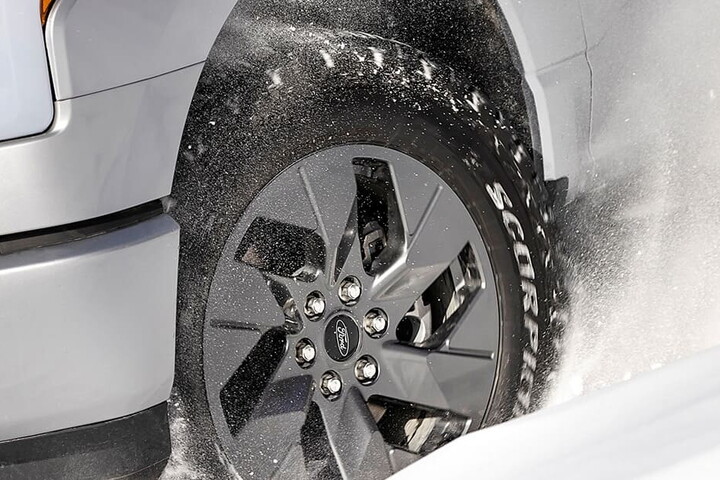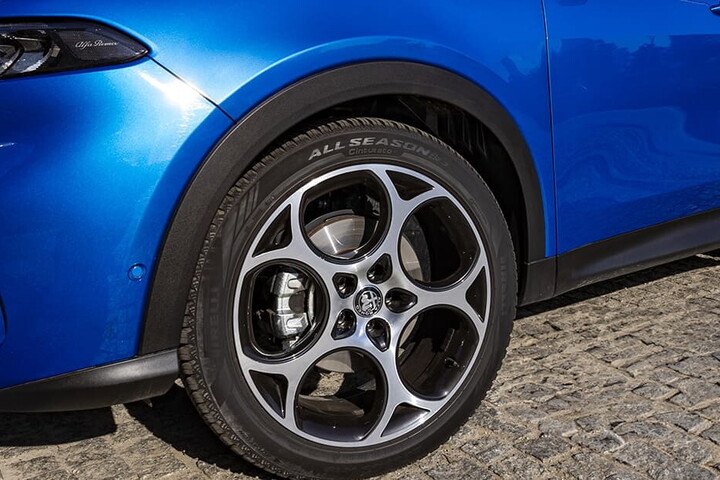We are using the word “wheel” here deliberately to refer to all the components of this crucial part of our car, from the alloy rim to the tyre, and all its features in terms of thickness, sidewall, tread and so on. More often than not, the media appears more focused on appearance than on technical aspects, which may lead to forget that the overall size of the four wheels is not only a matter of looks but can seriously condition engine performance and fuel efficiency. The topic is relevant for supercars but also for the regular vehicles that travel on our everyday roads.

But exactly how does wheel size affect the performance of the car? We will try to explain it with a practical example: a tyre change on a Fiat 500. The owner picked 185/55 R15 size Pirelli Cinturato P1. First of all, it is worth spending a few words on what the numbers mean: the first – 185 in our example – is the width of the tyre expressed in millimetres. The second – 55 – is the sidewall height to width ratio of the tyre, expressed as a percentage. The letter “R” indicates radial internal construction, while 15 is the rim diameter expressed in inches. In order to better understand the influence of wheel size on performance, we need to accurately calculate the total diameter of the wheel. The following formula can be used to do this:
2x((tyre width x sidewall height percentage)/100) + (diameter of the rim in mm)
So, continuing with our example, the simple maths is:
2x((185x55)/100) + 381
Where 381 mm is the simple conversion of 15 inches into the metric decimal system. The result will be 584.5 mm, which is the precise total width of our wheel.
So, back to the question: how do these measurements affect our car? While designing a car engineers work in close contact with tyre manufacturers to determine precisely what sizes can be fitted on a given vehicle and adjust the transmission ratio as a consequence. By way of comparison, we can say can consider the total wheel diameter as the length of the final reduction ratio of the transmission. Increasing the total wheel diameter will also increase the final reduction ratio and this has essentially two consequences: acceleration potential is decreased but a higher top speed can be reached. Naturally, these changes are directly proportional to the variation of size. The consequences of a few millimetres of difference may be virtually undetectable, while more radical changes may cause much more obvious variations.
But there is another element to be taken into consideration: increasing the wheel diameter will also increase the axle weight as a whole. This will obviously increase inertia, cause further loss of acceleration and also lower cornering accuracy. The behaviour of the car may also change: increasing the tyre diameter will obviously raise the chassis height and the centre of gravity as a consequence, with the direct effect of increasing roll and oscillations.
There are consequences of increasing the tread width as well. Above all, a larger width will contribute to increasing friction. A positive effect of this is an increase in road holding. But rolling resistance is also incremented at the same time.
In short, in this article we have explained what happens if the tyre size is changed in simple terms. Whether this is convenient for the car owner or not is a totally subjective matter and one which may be swayed by the opinion of the tyre fitter, at most. A particularly powerful car will not be significantly conditioned by increasing the wheel size and the return in terms of appearance could be well worth the price. If the objective is to increase top speed, as mentioned, then changing the tyre change will fulfil the task grandly, bearing in mind, as usual, that a variation of a few tens of millimetres implies major differences. Finally, it is worth remembering that wheel size will influence the speedometer readout because the device is always set and type-approved for original equipment tyres. You can check this by noting that the speed indicated by GPS sat-nav systems is more reliable on average than that of the dashboard instrument, particularly on older cars.
Let's see some other advantages or disadvantages of changing the tyre size and some related tips:
- If you choose bigger wheels, you will improve the stability of your car and the range of braking distance will be shortened;
- A larger diameter means that the wheel will be heavier and consequently speed will be slightly compromised during acceleration (depending also on the torque of the car);
- Comfort too, will be compromised because tyres will be harder and suspension risk faster corrosion since rims have a major impact on the surface of the road;
- Bigger wheels will also affect fuel consumption: since driving will be a little bit slower, car mileage will increase but, depending on the power of the car, you won't perceive it easily;
- Smaller wheels allow for tighter turns;
- Depending on the type of vehicle the tyres are mounted on, a wider diameter rather than a standard measure will improve stiffness and, consequently, safety while driving;
- Bigger wheels will also increase the maximum load of the car.
Big or small, the tyre industry has made lots of improvements concerning wheels to guarantee a safer and better experience for the driver. For instance, hi-tech products have been produced to take control of some information about wheels and road. Linked to an app, special tyres will communicate with your phone and will tell you information about temperature or tread status.




